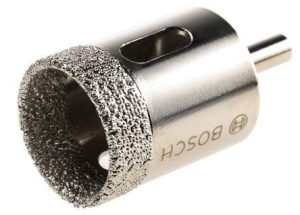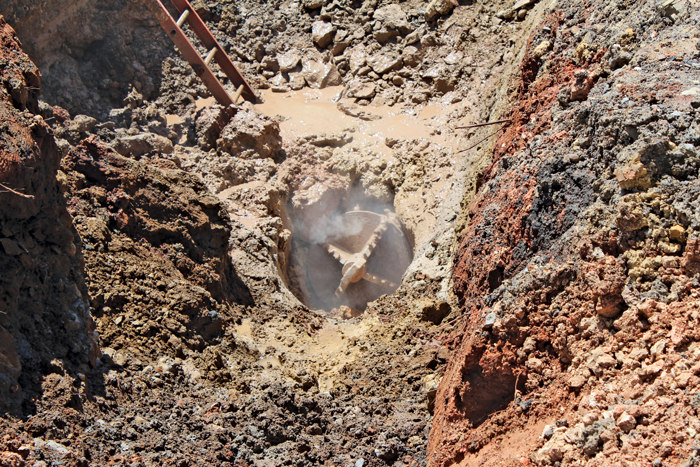What are the Hardest Rocks to Drill Through?
The Challenge of Drilling Through Earth’s Toughest Rocks
When it comes to drilling through rocks, not all rocks are created equal. Some rocks are incredibly tough and can pose a significant challenge to drilling operations. In this article, we will explore the hardest rocks to drill through, the reasons behind their hardness, and the techniques and tools used to overcome these challenges.

Why Are Some Rocks So Hard?
Rocks vary widely in terms of their hardness due to differences in their mineral composition and geological history. The hardness of a rock is typically measured on the Mohs scale, which ranges from 1 (softest) to 10 (hardest). Rocks with a high Mohs hardness score are the most challenging to drill through. Here are some of the hardest rocks encountered in drilling operations:
Granite (Mohs Hardness: 6-7): Granite is a common and notoriously hard rock. It is composed primarily of quartz, feldspar, and mica, which are all minerals known for their durability. Granite’s hardness makes it a popular choice for kitchen countertops and monuments, but it also makes it a formidable challenge for drilling.
Basalt (Mohs Hardness: 5-7): Basalt is an igneous rock formed from solidified lava. It is dense and can vary in hardness, but some basalt formations can be extremely hard. This rock is often found in volcanic regions and is used for construction, making it essential to understand how to drill through it effectively.
Quartzite (Mohs Hardness: 7): Quartzite is a metamorphic rock that starts as sandstone and undergoes intense heat and pressure, transforming it into a hard, durable rock. Its high quartz content gives it exceptional hardness, making it a challenging material for drilling.
Gneiss (Mohs Hardness: 7-8): Gneiss is another metamorphic rock that exhibits a banded appearance due to alternating layers of different minerals. Its hardness can vary, but some gneiss formations are incredibly tough to penetrate.
Challenges in Drilling Through Hard Rocks
Drilling through hard rocks presents several challenges:
Tool Wear: The hardness of the rock can cause rapid wear and tear on drilling tools, including drill bits and drill heads. This can increase operational costs and downtime.
Reduced Drilling Speed: Hard rocks require slower drilling speeds to prevent tool damage. This can significantly extend the time required to complete a drilling project.
Increased Energy Consumption: Drilling through hard rocks demands more energy, which can lead to higher operational costs and increased environmental impact.
Overcoming the Challenge: Techniques and Tools
To tackle the difficulties of drilling through hard rocks, engineers and geologists employ various techniques and specialized tools:

Diamond Core Drilling: Diamond core drilling utilizes a diamond-encrusted drill bit, which is exceptionally effective for drilling through hard rocks like granite and quartzite. The hardness of diamonds allows them to cut through even the toughest materials. For drill it group australia click this.
Percussive Drilling: This method involves rapid hammering or pounding to break through hard rocks. It is commonly used for drilling through basalt and gneiss.
High-Pressure Water Jetting: Water jetting can be effective in softening and eroding hard rocks. High-pressure water is directed at the rock’s surface, weakening it and making drilling easier.
Chemical Rock Softening: Some chemicals can be injected into the rock to soften it, making it more amenable to drilling. This technique is used in specific geotechnical applications.
Rotary Drilling with Tungsten Carbide Bits: For moderately hard rocks, rotary drilling with tungsten carbide bits can be efficient. Tungsten carbide is a hard and durable material that can withstand the abrasion caused by drilling.
Conclusion
Drilling through hard rocks is a formidable challenge in various industries, including construction, mining, and geology. Understanding the composition and properties of these rocks and using specialized techniques and tools are essential for successful drilling operations. Whether it’s granite, basalt, quartzite, or gneiss, the world’s hardest rocks can be conquered with the right knowledge and equipment. As technology continues to advance, the methods for drilling through these formidable obstacles will only improve, making the task more efficient and cost-effective.
In conclusion, the earth’s toughest rocks may be hard to drill through, but human ingenuity and innovation continue to overcome these geological challenges.
Disclaimer: This article is for informational purposes only and does not constitute professional advice. Always consult with experts and follow safety protocols when conducting drilling operations in challenging rock formations.
By incorporating the above information, we have provided a comprehensive guide on the hardest rocks to drill through and the techniques used to overcome this geological challenge. For more insights on drilling, rock properties, and geotechnical practices, explore our website further.

